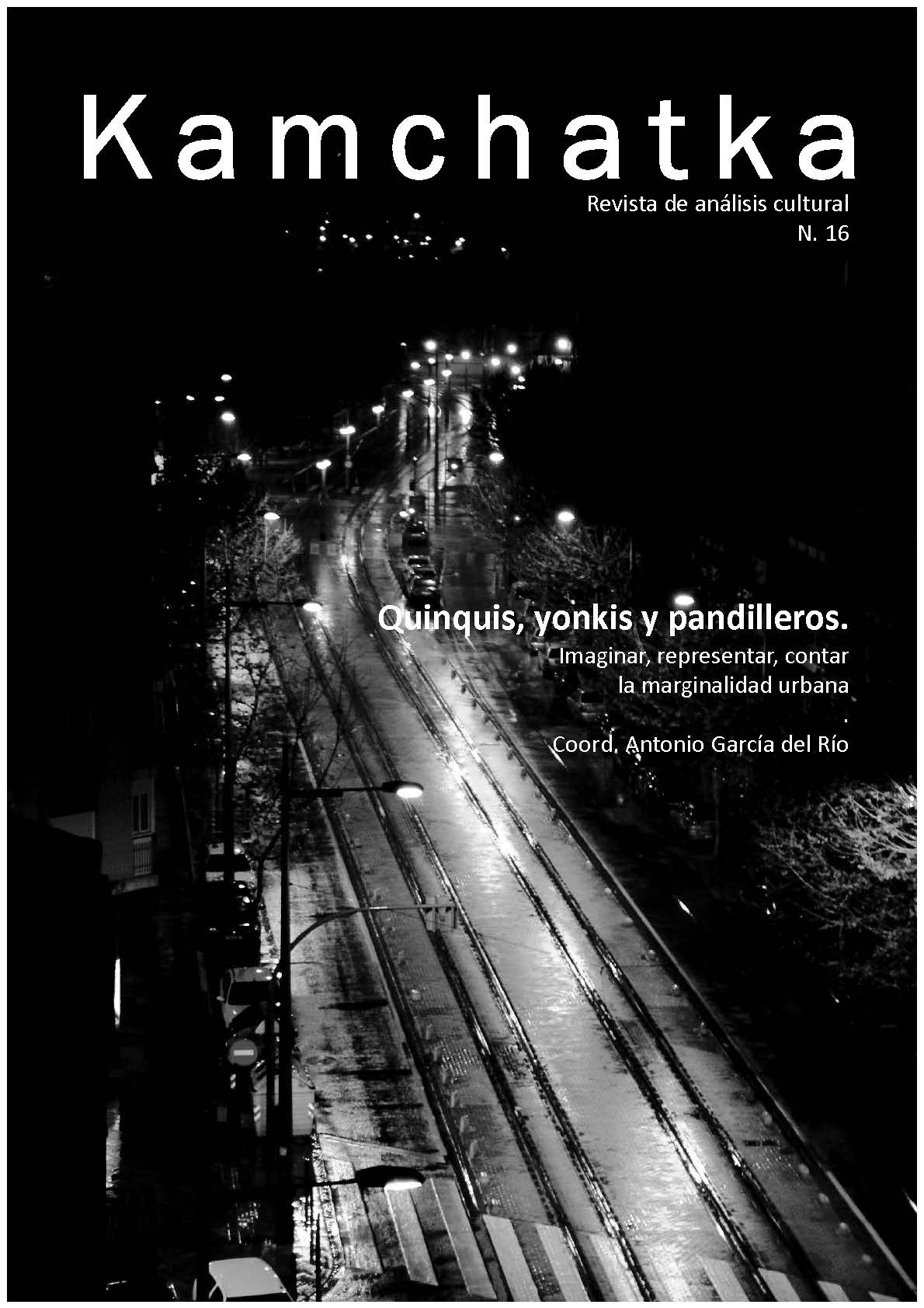Objects in memory settings: theoretical approaches and analysis of examples referring to the children of the disappeared in Argentina
DOI:
https://doi.org/10.7203/KAM.16.17566Keywords:
memory objects, witness objects, emblematic object, second generation, children of the disappeared Abstract
Abstract
First, we propose a reflection on three types of objects linked to various memory settings: the witness objects that functions as a verdictive code whose first intention is to certify the event; the memory object that displays a memory work of a reflective-interpretive and/or elaborative type; and the emblematic object that is presented and acts in the demonstrations, in the commemorations, in the trials, in the protests and demands articulated in the struggles for memory, truth and justice. We then focus on examining a set of cultural productions made by the children of victims of State terrorism deployed during the last Argentine dictatorship (1976-1983). We finally study the biographical and autobiographical objects exemplified from two exhibitions by the artist from La Plata, Andrea Suárez Córica, one in which she gathers objects from her murdered mother (The embrace of objects 2020) and another (The girl and the file 2019) in which she gathers objects from his own childhood.
 Downloads
Downloads
 References
References
Amar Sánchez, Ana María, Basile, Teresa (2014). “Introducción”. Derrota, melancolía y desarme en la literatura latinoamericana de las últimas décadas. Revista Iberoamericana, 80, 47 (2014): 327-349.
Basile, Teresa (2019). Infancias. La narrativa argentina de HIJOS. Villa María: EDUVIM.
Basile, Teresa, González, Cecilia (2020). “Las posmemorias en acto”. Basile, Teresa y González, Cecilia (eds). Las posmemorias: Perspectivas latinoamericanas y europeas. La Plata: Prensas de la Universidad Nacional de La Plata. Facultad de Humanidades y Ciencias de la Educación; Bordeaux: Presses Universitaires de Bordeaux. (Coediciones; 9/Maison des Pays ibériques ; Série Amériques), págs. 9-30.
Basso, Florencia (2019). Volver a entrar saltando: Memoria y arte en la segunda generación de argentinos exiliados en México (2019). La Plata: Universidad Nacional de La Plata, Universidad Nacional de Misiones y Universidad de General Sarmiento.
Bauman, Zygmunt (1998). Modernidad y Holocausto. Madrid: Sequitur.
Baudrillard, Jean (1974). “La moral de los objetos. Función-signo y lógica de clase”. Moles, Abraham (ed.). Los objetos. Buenos Aires: Editorial Tiempo Contemporáneo: págs. 37-75.
Codaro, Laura (2020). Cromañón: La construcción del acontecimiento y los procesos de memoria en la prensa escrita (2004-2014). (Tesis de posgrado). Universidad Nacional de La Plata.
Da Silva Catela, Ludmila (2005). “Formas de las memorias. Etnografía de las marcas, usos y reinterpretaciones de las memorias políticas en Argentina”. Seminario Territorios en conflicto ¿Por qué y para qué hacer patrimonio?. Santiago de Chile: Editorial Diban: 12 – 29.
Derrida, Jacques (1997). Mal de archivo. Una impresión freudiana. Madrid: Trotta.
Didi-Huberman, Georges (2004). Imágenes pese a todo. Memoria visual del Holocausto. Barcelona: Paidós.
Dillon, Marta (2015). Aparecida. Buenos Aires: Sudamericana.
Engler, Verónica (2015). “Las ruinas del terror”. Página12 (21 de septiembre de 2015).
Freud, Sigmund (1993). “Duelo y melancolía”. Buenos Aires: Amorrortu.
Hirsch, Marianne. “The generation of Postmemory”. Poetics Today 29 (2008): 103-128.
Hirsch, Marianne (2012). The generation of Postmemory: Writing and visual culture after the Holocaust. Columbia University Press.
Levi, Primo (2011). Los hundidos y los salvados. Barcelona: Océano.
Logie, Ilse, Willem, Bieke. “Narrativas de la postmemoria en Argentina y Chile: la casa revisitada”. Alter/nativas Latin American Cultural Studies Journal. 5 (2015).
Moles, Abraham y otros (1974). Los objetos. Buenos Aires: Editorial Tiempo Contemporáneo.
Morin, Violette (1974). “El objeto biográfico”. Moles, Abraham (ed.). Los objetos. Buenos Aires: Tiempo Contemporáneo: págs. 187-199.
Napoli, Diana. “Nuevas historias”: el mal de archivo”. Historia y grafía 46 (2016): 109-128.
Reati, Fernando (2015). “Entre el amor y el reclamo: la literatura de los hijos de militantes en la posdictadura argentina”. Alter/nativas Latin American Cultural Studies Journal 5 (2015).
Steinwasser, Marga, Sánchez, María Antonia (2007). “Química de la memoria: Una experiencia de la desaparición”. Museo de la Memoria de Rosario.
Suárez Córica, Andrea (2020). “El abrazo de los objetos”.
Suárez Córica, Andrea (2019). “La niña y el archivo”.
Tello, Mariana Eva. “(Sobre)vidas: objetos, memorias e identidades en la transmisión de experiencias concentracionarias”. Revista del Museo de Antropología 5 (2012): 141-148.
Downloads
Published
How to Cite
-
Abstract999
-
Artículo PDF (Español)714
Issue
Section
License
This journal provides an immediate free access to the content on the principle that freely make investigation available to the public, which promotes an increased global knowledge exchange.
Unless otherwise indicated, texts published in this journal are under the license Attribution-NonComercial 4.0 by Creative Commons. These texts may be copied, distributed and publicly communicated whenever the publication’s author and title are quoted and whenever they are not used for commercial purposes. In any case, intellectual property of the articles and its potential economic rights entirely belong to its authors.
The full license can be consulted on https://creativecommons.org/licenses/by-nc/4.0/. We encourage authors to disseminate papers published in Kamchatka. Journal of cultural analysis electronically, in institutional digital repository or in their websites.





